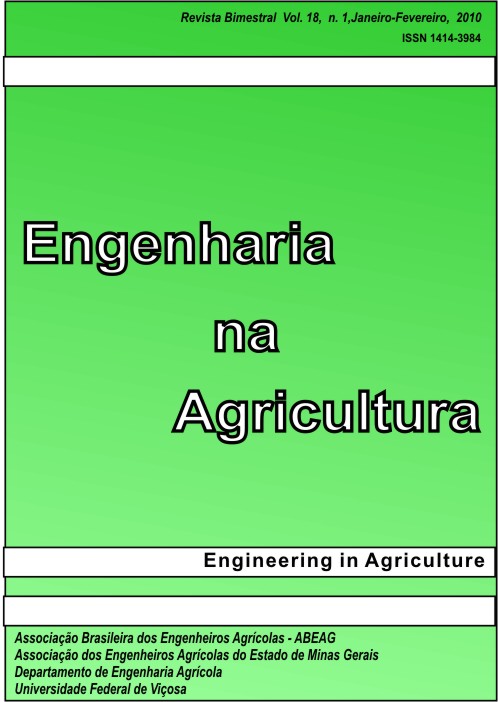MODELS TO DETERMINE PHOSPHORUS AND NITRATE CONCENTRATION IN QUARTZARENIC NEOSOL AND RED LATOSOL USING TDR
DOI:
https://doi.org/10.13083/reveng.v18i1.162Keywords:
Recursos hídricosAbstract
TDR (Time domain Reflectometry) allows monitoring soil ions in real time using the soil water content (?) and the bulk electric conductivity (CEs), which allows estimate electric conductivity of the soil solution (CEss) and the nutrient ionic concentration (Ci). This study was done to adjust and test models that estimate the concentrations of nitrate and phosphorus using data of soil water content and bulk electric conductivity of Quartzarenic Neosol (RQ) and Red Latosol (LV) using a TDR. The study was done in soil columns. Phosphorus and calcium nitrate solutions were applied in five different concentrations to soils at five different water contents. Based on determination coefficient (r2), the model of Vogeler et al. (1996) followed by that of Rhoades (1976) best adjusted the CEss, CEs and ? for both soils and fertilizer concentrations. Through the model of Vogeler et al. (1996), the phosphorus Ci as the function of CEs and ? was estimated by combining a potential model, that correlated the data of CEss and the phosphorus content at low concentration of Ci in RQ and for the full range Ci in LV. On the other hand, a linear model was used for nitrate in both soils and for phosphorus at high concentrations in RQ. In RQ, the models overestimated low concentrations of phosphorous and underestimated high concentrations, and all concentrations studied in LV. The nitrate concentration was underestimated in RQ and overestimated in LV.Downloads
Downloads
Published
How to Cite
Issue
Section
License
Authors who publish with this journal agree to the following terms:
The author(s) authorize(s) the publication of the text in the journal;
The author(s) ensure(s) that the contribution is original and unpublished and that it is not in the process of evaluation by another journal;
The journal is not responsible for the views, ideas and concepts presented in articles, and these are the sole responsibility of the author(s);
The publishers reserve the right to make textual adjustments and adapt texts to meet with publication standards.
From submission, the author is fully conceding the paper's patrimonial rights to the publication, but retaining the owner of its moral rights (authorship and paper's identification) according to Creative Commons Attribution-Noncommercial.








 Licensed by
Licensed by 